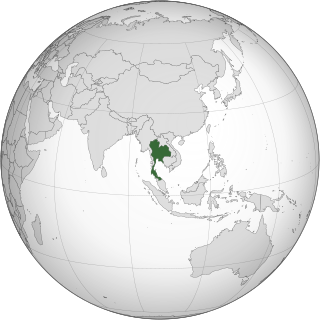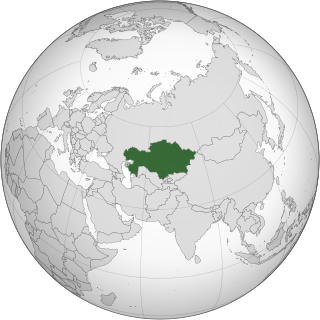Related Research Articles
A country code is a short alphanumeric identification code for countries and dependent areas. Its primary use is in data processing and communications. Several identification systems have been developed.

The North American Numbering Plan (NANP) is a telephone numbering plan for twenty-five regions in twenty countries, primarily in North America and the Caribbean. This group is historically known as World Zone 1 and has the telephone country code 1. Some North American countries, most notably Mexico, do not participate in the NANP.
A telephone numbering plan is a type of numbering scheme used in telecommunication to assign telephone numbers to subscriber telephones or other telephony endpoints. Telephone numbers are the addresses of participants in a telephone network, reachable by a system of destination code routing. Telephone numbering plans are defined in each of the administrative regions of the public switched telephone network (PSTN) and in private telephone networks.
E.123 is an international standard by the standardization union (ITU-T), entitled Notation for national and international telephone numbers, e-mail addresses and web addresses. It provides guidelines for the presentation of telephone numbers, email addresses, and web addresses in print, on letterheads, and similar purposes.
MSISDN is a number uniquely identifying a subscription in a Global System for Mobile communications or a Universal Mobile Telecommunications System mobile network. It is the mapping of the telephone number to the subscriber identity module in a mobile or cellular phone. This abbreviation has several interpretations, the most common one being "Mobile Station International Subscriber Directory Number".
International direct dialing (IDD) or international subscriber dialling (ISD) is placing an international telephone call, dialed directly by a telephone subscriber, rather than by a telephone operator. Subscriber dialing of international calls typically requires an international call prefix to be dialed before the country code.

Telephone numbers in Europe are managed by the national telecommunications authorities of each country. Most country codes start with 3 and 4, but some countries that by the Copenhagen criteria are considered part of Europe have country codes starting on numbers most common outside of Europe.

Telephone numbers in Italy are managed by the Autorità per le Garanzie nelle Comunicazioni (AGCOM), a national regulatory authority for the communication industry located in Rome.

In Sweden, the area codes are, including the leading 0, two, three or four digits long, with larger towns and cities having shorter area codes permitting a larger number of telephone numbers in the eight to ten digits used. Before the 1990s, ten-digit numbers were very rare, but they have become increasingly common because of the deregulation of telecommunications, the new 112 emergency number, and the creation of a single area code for the Greater Stockholm area. No subscriber number is shorter than five digits. The longest subscriber numbers have eight digits.

Telephone numbers in the Republic of China (Taiwan) use a system of area codes, beginning 02 to 08. The leading digit(s) following the area code denote the network operator (Chunghwa Telecom and its competitors). Mobile numbers begin 09. The international code for calls into Taiwan is 886.

Thailand's telephone numbering plan in Thailand is managed by the National Broadcasting and Telecommunications Commission (NBTC) in accordance with International Telecommunication Union's (ITU) recommendation E.164.
Telephone numbers in Canada follow the fixed-length format of the North American Numbering Plan (NANP) of a three-digit area code, a three-digit central office code, and a four-digit station or line code. This is represented as NPA NXX XXXX.

Telephone numbers in Russia are administered by Roskomnadzor, and Ministry of Digital Development, Communications and Mass Communications of the Russian Federation. Russia's National Numbering Plan (NNP) is a four-level telephone numbering plan with local, zone, country, and international scopes, implementing a closed numbering plan, in which the number of digits of all national significant numbers (NSN) assigned to subscriber telephones is fixed at ten, with three digits for the area code, and a seven-digit subscriber number which includes a zone code of up to two digits. Internationally, Russia participates in the numbering plans of the International Telecommunication Union (ITU) provided by recommendations E.164 and E.123, using the telephone country code 7.

A telephone number is a sequence of digits assigned to a landline telephone subscriber station connected to a telephone line or to a wireless electronic telephony device, such as a radio telephone or a mobile telephone, or to other devices for data transmission via the public switched telephone network (PSTN) or other public and private networks.

Telephone numbers in Kazakhstan are regulated under the auspices of the Telecommunications Committee of the Ministry of Digital Development, Innovations, and Aerospace Industry in the Republic of Kazakhstan. They are administered by telecommunication providers, notably Kazakhtelecom, a state-backed and the largest national operator.
Telephone numbers in San Marino have six to ten digits. Numbers starting with either 0, 8 or 9 are assigned to landlines, 6 is used for mobile services, 5 for IP telephony services and 7 for premium numbers. No trunk prefixes are used: all the digits are always dialed.

All telephone numbers in Panama are seven or eight digits long and there are no area codes. All numbers that both begin with 6 and have 8 digits are mobile numbers. All landline numbers have 7 digits. The first digit of landline numbers may be used to vaguely identify the location of the caller. Mobile phones were also assigned 7 digit numbers until 2005, when they were moved to their own number space with 8 digits. Mobile numbers are recycled if the user is marked as inactive by the mobile service provider, and landline numbers are also recycled if a user cancels their landline phone service.
The Belize telephone numbering plan is the system used for assigning telephone numbers in Belize.
References
- 1 2 "E.164 : The international public telecommunication numbering plan". www.itu.int. p. 11. Archived from the original on 2019-11-06. Retrieved 2019-11-12.
- ↑ "E.163 : Numbering plan for the international telephone service". www.itu.int. Archived from the original on 2019-07-29. Retrieved 2019-11-12.
- ↑ "E.164.1 : Criteria and procedures for the reservation, assignment and reclamation of E.164 country codes and associated identification codes (ICs)". www.itu.int. Archived from the original on 2019-11-12. Retrieved 2019-11-12.
- ↑ "E.164.2 : E.164 numbering resources for trials". www.itu.int. Archived from the original on 2019-11-12. Retrieved 2019-11-12.
- ↑ "E.164.3 : Principles, criteria and procedures for the assignment and reclamation of E.164 country codes and associated identification codes for groups of countries". www.itu.int. Archived from the original on 2019-11-12. Retrieved 2019-11-12.
- ↑ URLs for Telephone Calls. IETF. April 2000. sec. 2.2. doi: 10.17487/RFC2806 . RFC 2806 . Retrieved January 11, 2021.
- ↑ Olsen, Chris (2011-08-01). Implementing Cisco Unified Communications Manager, Part 2 (CIPT2) Foundation Learning Guide: (CCNP Voice CIPT2 642-457). Cisco Press. p. 172. ISBN 9780132312141.